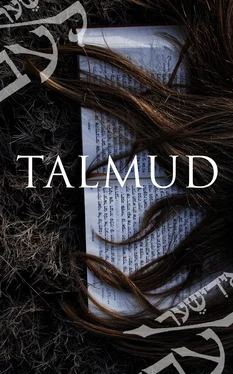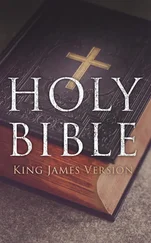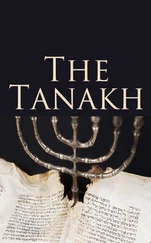Table of Contents
MISHNA: ( a ) The following were the heads of offices a1in the Sanctuary: Johanan, son of Pinchas, keeper of the seals a2; A'hia, (superintendent) of drink-offerings; Mathia, son of Samuel, (superintendent) of the casting of lots a3; Petha'hia, (superintendent) of bird-offerings. a4Petha'hia is Mordecai, but why do they call him Petha'hia? Because he used to expound and interpret scriptures, and was master of seventy languages. Ben A'hia was (superintendent) of the cures of priests suffering with abdominal diseases. a5Ne'huniah was master of the well. a6Gebini was herald. a7Ben Gabhar was turnkey of the gates. a8Ben Bebai was master of the temple-guard. a9Ben Arzah was master of the kettledrums (which were beaten as a signal for the Levites to commence their chant). Higros, son of Levi, was (leader) of the singing. The family of Garmo (superintended) the making of the showbreads. a10The family of Abtinos (superintended) the preparing of the incense. a11Elazar (superintended) the making of the curtains. a12Pinchas superintended the vestments. a13( b ) No less than three treasurers and seven chamberlains must be appointed, b1and no less than two officers were put in charge of public moneys. Exceptions were made in the cases of Ben A'hia, superintendent of the cures of the sick, and Elazar, superintendent of the preparation of curtains, because they were unanimously elected by the community.
( c ) There were four seals in the Sanctuary, inscribed with the words Egel (calf), Sachar (ram), Gdi (kid), and 'Houte (sinner, meaning here one covered with sores). Ben Azai says, that there were five (seals), and the inscriptions were in Aramaic, meaning: calf, ram, kid, poor sinner (one afflicted with sores), and rich sinner (one afflicted with sores). The one inscribed with "calf" was used for drink-offerings brought with offerings of the herds, large or small, male or female; the one inscribed with "kid" was used for drink-offerings brought with offerings of the flocks, large or small, male or female, with the exception of rams; the one inscribed with "ram" served for drink-offerings brought only with rams; the seal inscribed with "sinner" served for drink-offerings brought with the three cattle-offerings of those afflicted with sores. c1( d ) One who desired to bring drink-offerings, for instance, went to Johanan, who was keeper of the seals, paid his money, and received a seal; he then went to A'hia, who had charge of the drink-offerings, gave him the seal, and received the drink-offering. In the evening the two officers came together, when A'hia turned over the seal and received instead the money. If there was too much money, it belonged to the Sanctuary; if too little, Johanan had to supply the deficit: for the sanctuary had that prerogative.
( e ) One who lost his seal had to wait until evening. If there was a surplus sufficient to cover the seal, e1he was given the drink-offering for that amount; otherwise, he did not receive it. The date of the day was on the seal to prevent fraud.
( f ) There were two chambers in the sanctuary. One was called chamber of the silent, the other chamber of utensils. In the former, devout men secretly gave charitable gifts, and the poor of good family received there secretly their sustenance. In the other chamber, every one who desired to offer a utensil voluntarily, laid it down. Every thirty days the treasurers opened the chamber, and every utensil found to be fit for the maintenance of the Temple was preserved, while the others were sold and the proceeds went to the treasury for the maintenance of the Temple. f1
Footnotes
a1MISHNA a . The list of officers enumerated by the Mishna were not all officers at the same time, but served at different periods, and the Mishna merely names the most important and pious among them.
a2See Mishna d , same chapter.
a3Lots were cast for the determination of the turn of the priests for each particular service. The superintendent would keep a record of such as were eligible for duty, and then cast lots for the priest who was to serve.
a4Petha'hia was superintendent-in-chief of all those who had charge of the bird-offerings; these bird-offerings were brought by women who had recently been confined; and there were so many of them that a record had to be kept, who came first, whose time was nearly expired, and how much was to be charged for the offerings. Besides this, it often happened that the birds became mixed and required great wisdom to separate them and recognize to whom every bird belonged, as the changing of the birds would make the offering invalid. (See commentary of Israel Lipshuetz.)
a5Such diseases among priests were of very frequent occurrence and inevitable; for they were dressed during services very lightly, being allowed to wear only four articles of apparel; viz., a linen shirt, linen pantaloons, a linen cap, and a girdle. Besides, they had to walk barefoot on the marble floor, and were constantly eating meat of the sacrifices, which had to be eaten during a specified time. Hence they needed many attendants, in order that, as soon as one priest took sick, a substitute was brought in his place and he was removed to the sick ward. Ben A'hia was the superintendent-in-chief of these matters.
a6On account of the immense influx of people into Jerusalem three times a year, the wells for the supply of water, both on the roads and in the city, had to be looked after, and Ne'huniah had charge of this.
a7The commencement of all services had to be heralded, and many heralds were employed. Gebini was herald-in-chief, and his duty was mainly to call out in the morning: "Priests, to your duties! Levites, to your chants! Israelites, to your places!" He had so powerful a voice that it could be heard eight miles.
a8He had charge of the keys of the gates and of the men who stood at the gates.
a9The gates of the Temple had to be guarded day and night, even in times of peace. To properly care for the guard and to punish all negligence in guarding the gates was the duty of Ben Babai.
a10For showbreads, twelve loaves had to be made every week, and had to be made so that they would keep fresh the entire week. For further details, see Tract Tamid. The family of Garmo had charge of this work for generations.
a11The incense, which was used twice a day, had to be prepared with especial skill from many different spices, and in proper proportions. Further details are also to be found in Tract Tamid. The family Abtinos had charge of this branch for many generations.
a12The curtains, which were frequently changed, had to be inspected as to workmanship, cleanliness, etc., and this duty devolved upon Elazar.
a13The vestments of the priests had to be carefully examined as to cleanliness, and had to be sent out to be laundered regularly. Many rooms in the Temple were devoted to those vestments, and Pinchas had charge of them all.
Much has been said as to the character of the men enumerated in the Mishna, whether they were priests themselves, Levites, or ordinary Israelites. For particularized information regarding this subject, we would refer to "Die Priester und der Cultus," by Dr. Adolf Büchler, Vienna, 1895. It is estimated that the priests in Jerusalem approached the enormous number of twenty thousand. Besides, there were numbers of Levites.
b1MISHNA b . The officers of the Temple ranked as follows: The king, the high priest, the assistant high priest (Sagan), two catholicoses, seven chamberlains (Amarkolins), three treasurers (Gisbars), and, finally, many smaller officials; e.g., inspectors, officers of the guard, etc. (See "Die Priester und der Cultus," pp. 90-117.) The duties of each officer are described in Tamid and Yuma.
"Catholicos" is here used in the sense of patriarch or head, which term still retains a similar meaning in the "Ecclesiastical History of the Armenian Church," deriving its original meaning from the Greek καθολικός--general or universal. In the latter sense it was adopted at a very early period by the Christian church, In the exclusive sense of denoting the church as the "depository of universally received doctrine in contrast with heretical sects" it is still improperly retained by the Roman Catholic Church. I am surprised to find no mention of the officers of this name and function under the appropriate title anywhere in the "Encyc. Brit."
Читать дальше












